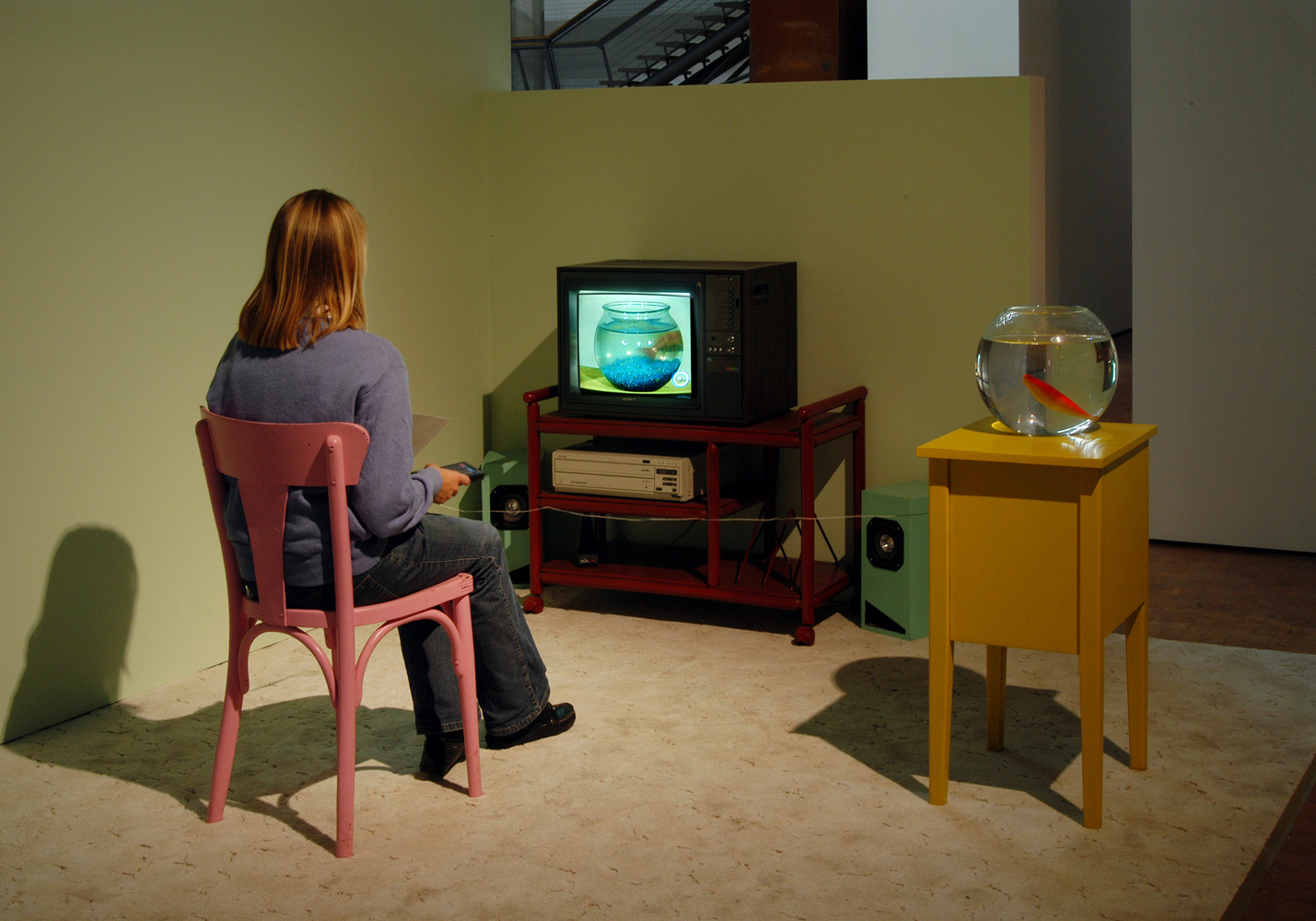Lorna (1979–1984)
Interactive laser disc installation
With »Lorna«, Lynn Hershman Leeson created the first work on videodisc in the history of art that enabled user interaction. As of the late 1970s the development of the videodisc meant that a storage medium was on the market that combined the qualities of the videotape with the possibility of direct intervention. As such, users were able to influence not only the temporal dimension of the film, but also the order of the narrative structure. The disk shows images of a woman – Lorna, played by Joanna Mross – who lives in a one-room apartment in Texas and whose sole connections to the world are the telephone and television. Viewers act as proxies and control Lorna’s story via a remote handset, making their way through voyeuristic scenes ever deeper into the protagonist’s psychological profile.
Paradoxically they free Lorna from her plight precisely with the help of the media that reinforce her fears of the outside world. The story has one of three different final scenes depending on what the users choose: Lorna remains imprisoned in her apartment and despair, commits suicide or she shoots the TV instead, symbolically »murdering« the mass media. With Lorna Lynn Hershman Leeson asked the question very early on as to the increasing interference of surveillance technologies – a topic that has gained new relevance in a time when mediabased events are taking the place of those that can be directly experienced.
Paradoxically they free Lorna from her plight precisely with the help of the media that reinforce her fears of the outside world. The story has one of three different final scenes depending on what the users choose: Lorna remains imprisoned in her apartment and despair, commits suicide or she shoots the TV instead, symbolically »murdering« the mass media. With Lorna Lynn Hershman Leeson asked the question very early on as to the increasing interference of surveillance technologies – a topic that has gained new relevance in a time when mediabased events are taking the place of those that can be directly experienced.
